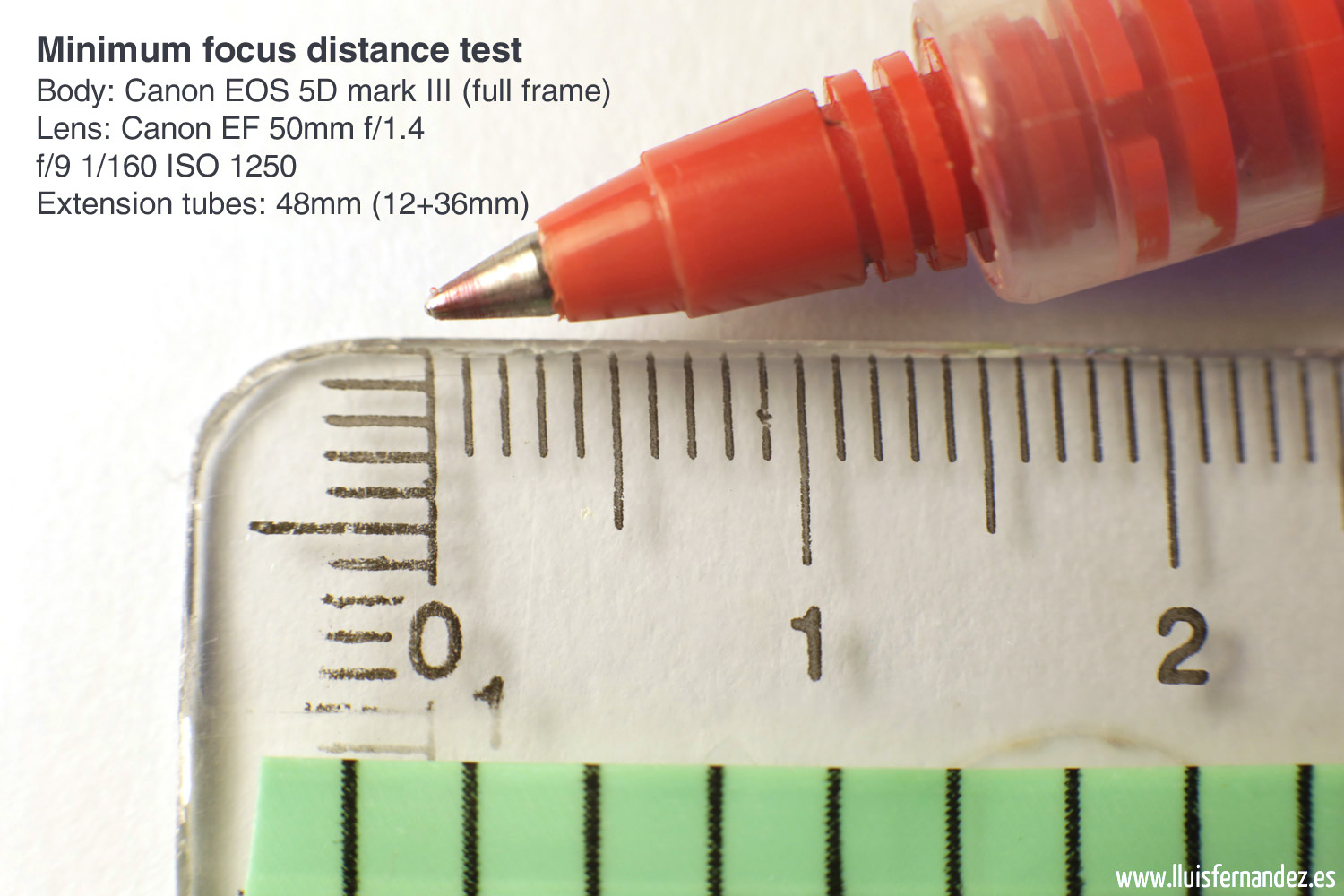Extension tubes are a good low cost alternative for photographers who want to experiment with macro photography without having to buy a lens especially designed for macro. They are a few empty tubes (with no optical elements inside) set between the camera body and your lens, thereby increasing the distance between the lens and the focal plane of the camera (either a sensor or a negative). This fact considerably reduces the minimum focusing distance of our lens and allows us to get much closer to the object to be photographed in macro. In the other hand, when we use optical extension tubes the lens loses the possibility to focus to infinity, so we can only use them to photograph items that are close to us.
Another aspect to consider when working in macro photography is the depth of field: it becomes critical and can be only about a few millimeters. Therefore you will usually have to work with closed apertures, that will help you increasing the depth of field to keep a focused scene. In addition, we also have to consider the fact that separate the lens from the camera also causes that less light reaches the sensor, so you have to compensate this fact with ISO or adding more light to the scene.

Since the optical principle that use these macro extension tubes is so basic, there are many online tutorials to build them yourself, even starting from toilet paper rolls! But for the same reason we can find some models with good construction quite affordable.
Basically there are two types of macro extension tubes: those that have electronic connections and those that don’t. If we chose the electronic ones, our camera will be able to access the information that the lens is transmitting, change the aperture and autofocus. On the other hand, if we use extension tubes that do not have electronic connections we will not be able to modify the lens aperture or auto focus from the camera body, and therefore we’ll need to use manual lenses that allow us to modify these parameters directly on the lens. Extension tubes with no electronic connections can cost about 15€, if you want them with electronic circuit and look for a special brand their price may be around 150€, but if you are patient and know how to search, on eBay you can find some models of cheaper brands with electronic circuit for about 40 €.
Extension tubes are available in kits that include the 12mm tube, the 20mm tube and the 36mm tube, so we can combine them depending on our needs. A few days ago I received my Viltrox extension tubes and I’ve been testing them . To take these photographs I used a Canon EOS 5D mark III with a Canon 50mm f/1.4 lens on it. The first photo shows the minimum focusing distance of the 50mm, in the following ones you can see the different combinations of the three extension tubes with the same lens. I hope you find this test useful! 😉



 32mm extension tubes and 50mm lens
32mm extension tubes and 50mm lens


Using the three extension tubes together (68mm in total) my 50mm f/1.4 was able to focus at a distance of about four centimetres from the photographed object:

Using the same combination of extension tubes (68mm in total) and the same 50mm lens, but mounted on a not full frame camera body (an EOS 30D with a 1.6x crop sensor) I could get this picture:

The truth is that viltrox extension tubes have positively surprised me. The electronic connections of my viltrox extension tubes worked perfectly. My 5D Mark III and the 30D were able to modify the aperture of the lens as well as it’s autofocus (obviously it is harder to focus with the extension tubes mounted).
People say that every photographer has a phase experimenting with macro photography, maybe here starts mine!
Comment on this article if you have any questions, and feel free to share it if you think it is useful! Thanks! 😉

